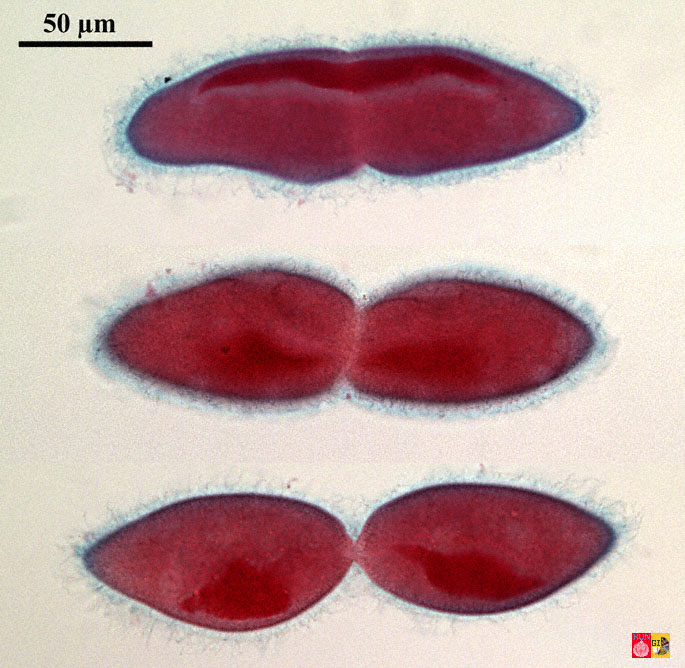Back to Medium sized version | With labels
Cell division in Paramecium

Legend:
1 dividing macronucleus
2 cilia
3 division plane
4 divided macronuclei
English name: Paramecium
Scientific name: Paramecium sp.
Familia: Parameciidae
Classis: Ciliatea
Phylum: Ciliophora
Regnum: Protista
Asexual reproduction (binary fission) in Paramecium
Paramecium belongs to the ciliated Protozoan (see illustration and more detailed view on the anatomy of these creatures). Each Paramecium contains two types of nuclei: a micronucleus and a macronucleus. Asexual reproduction involving mitosis of the micronucleus, amitotic division of the macronucleus and binary fission of the cell, is the common rule. Extensive DNA rearrangement (exchange of genetic material) between two individual occurs through sexual reproduction during some part of the life cycle. This complicated process requiring both meiotic and mitotic divisions is called conjugation.
General information about Protozoa:
Protozoans are unicellular eukaryotic organisms that sometimes form colonies. However, all cells of the colony have a similar anatomy (no differentiation). Like in other eukaryotic cells, the genetic material of protozoan cell is enclosed in a nucleus. A special feature of protozoa is that the cells may contain multiple nuclei and that both sexual and asexual reproduction occur.
